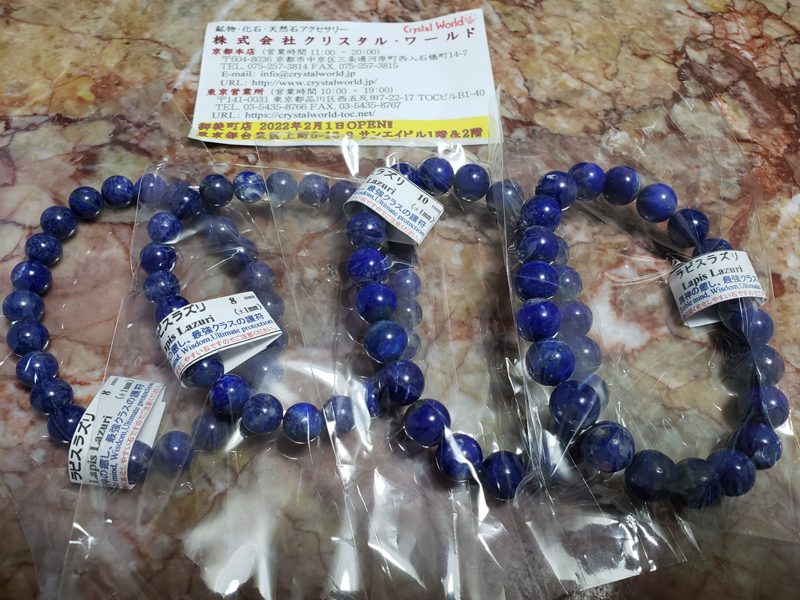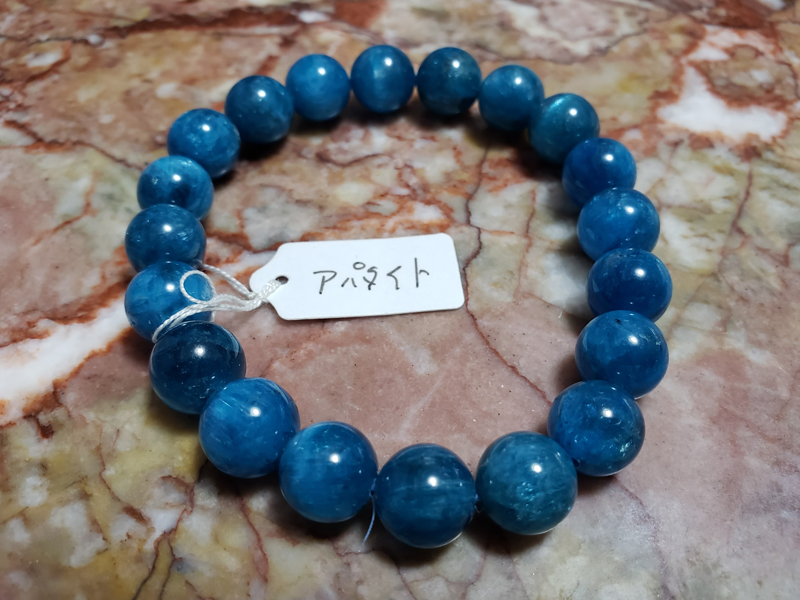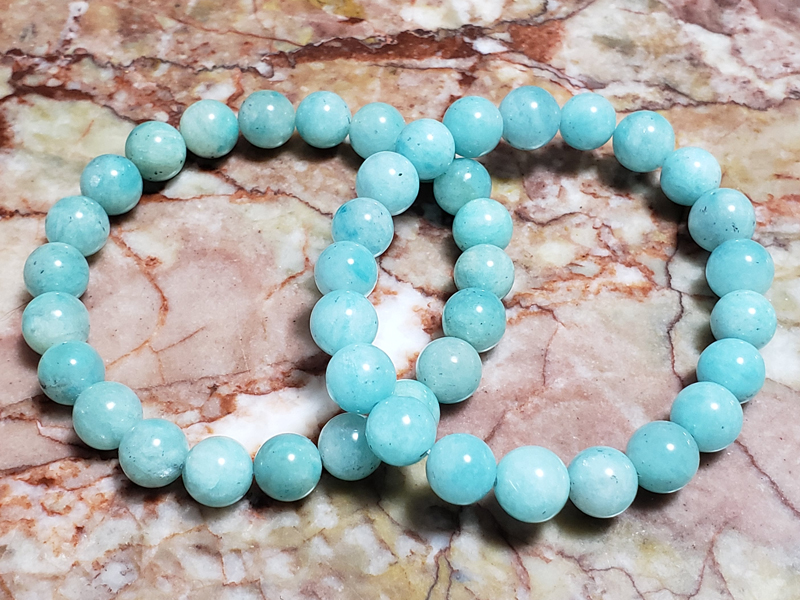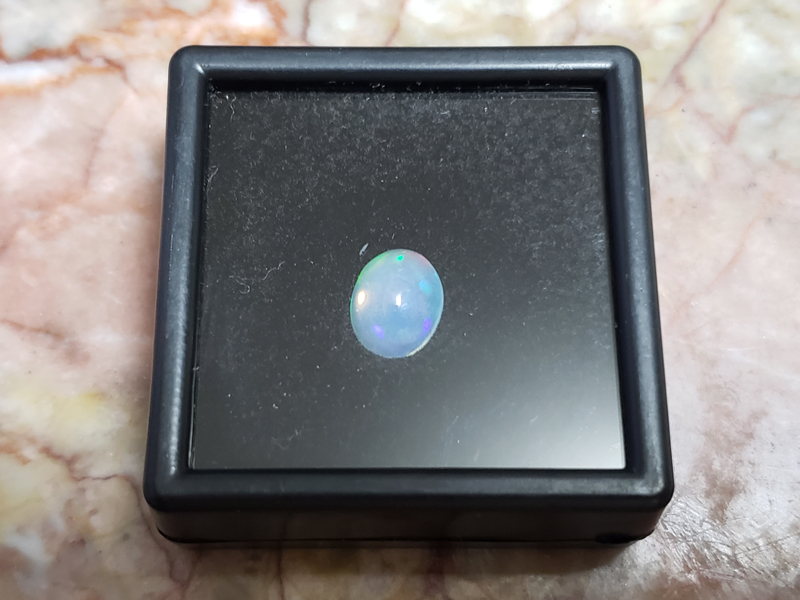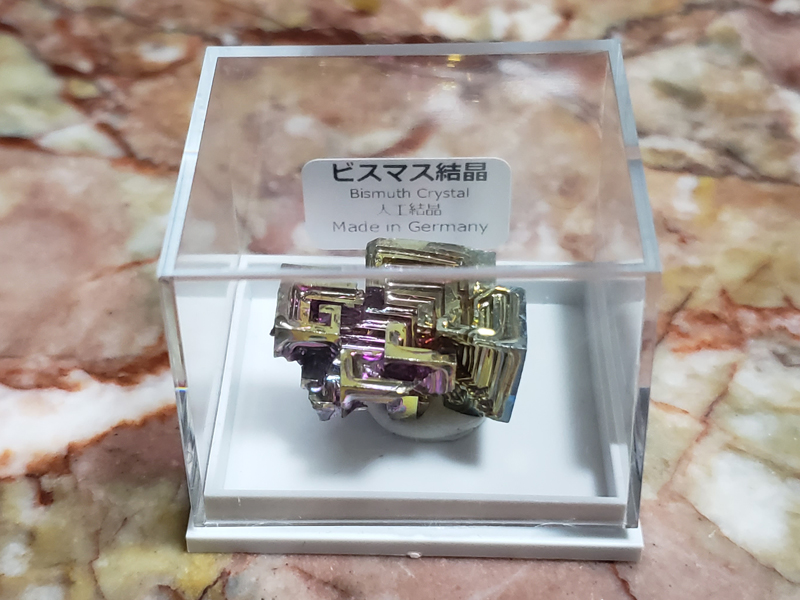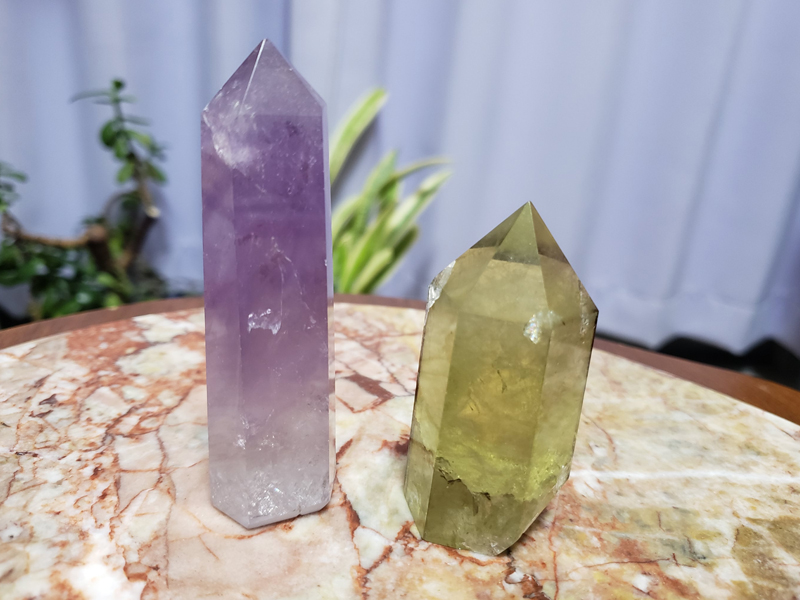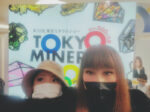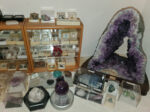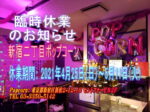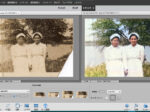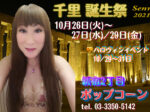 Last updated: April 4, 2023 at 6:56 PM
Last updated: April 4, 2023 at 6:56 PM
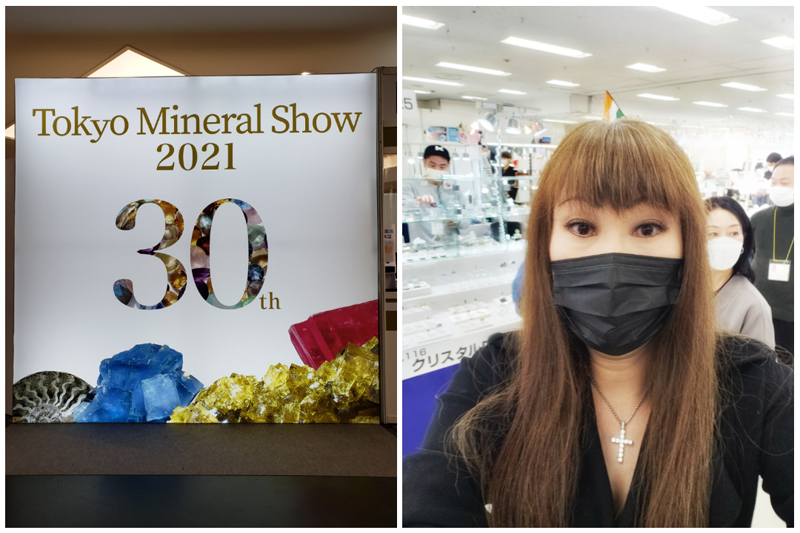
I went to the Tokyo Mineral Show (Ikebukuro Sunshine City) for the first time in five years.
For me, the main purpose of this exhibition is to rest the eyes and buy bargain goods.
This year's Mineral Show marks its 30th anniversary. At the 25th Tokyo Mineral Show held in 2016, which was the following blog, it was the largest event ever, with 272 exhibitors from Japan and 92 from overseas.
However, this year, due to the Corona disaster, there were no same-day tickets, and in addition to the admission restrictions by pre-booking with tickets, the number of overseas exhibitors has decreased significantly, so it became an exhibition that was a little lacking in excitement.
The 30th Tokyo Mineral Show had a total of 348 exhibitors from 328 companies in Japan and 20 overseas.
Tokyo Mineral Show Official Guide Book
After the temperature check at the reception of the mineral show and the exchange of tickets and admission tickets, the following guidebook (30 pages in total) will be given.
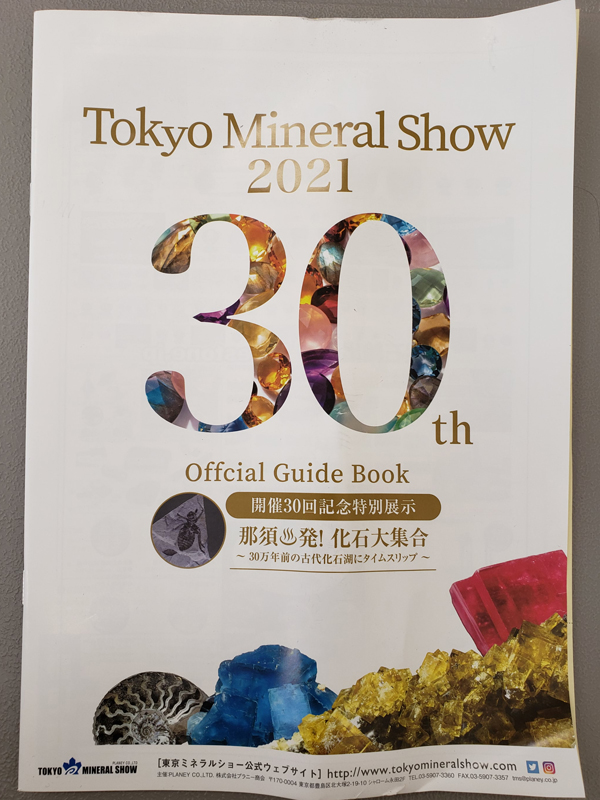
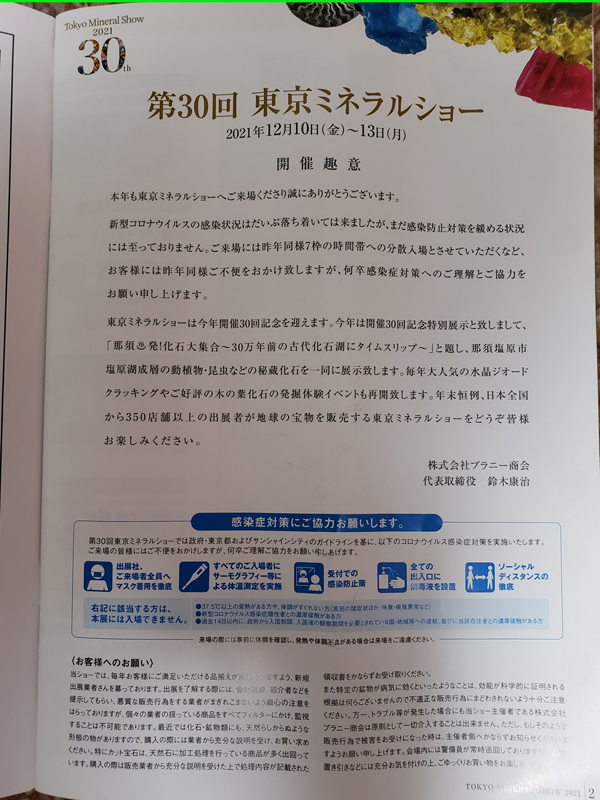
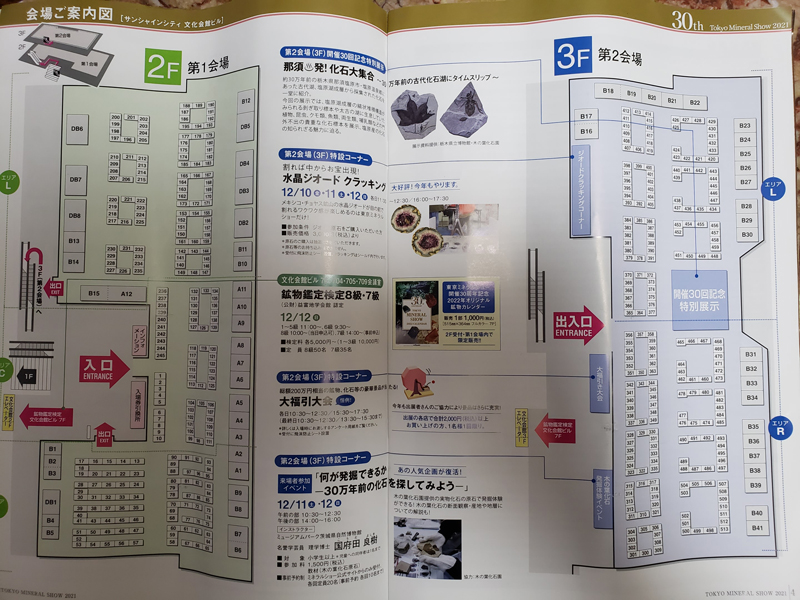
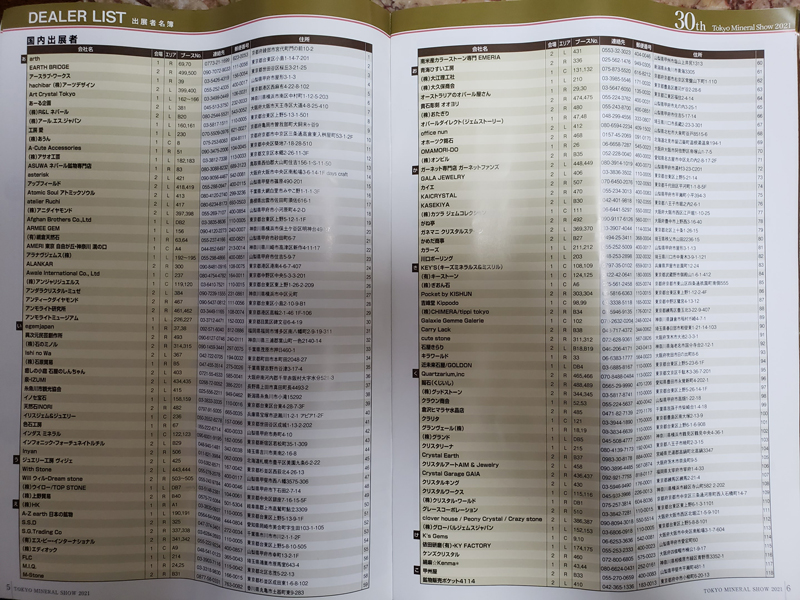
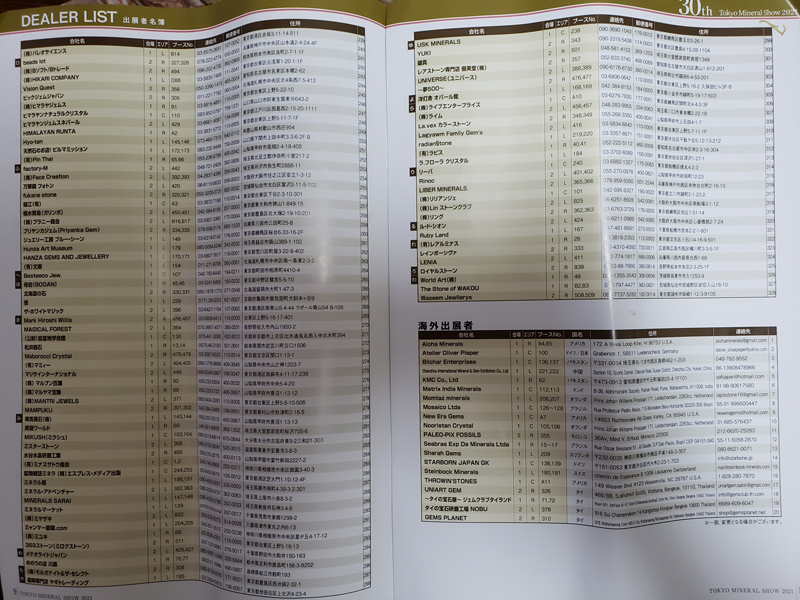
The 30th Tokyo Mineral Show
Fossils, minerals, loose jewelry and jewelry are on display at the Tokyo Mineral Show.
We didn't see many good bargains this year because there were few exhibitors from overseas.
Previously, on the last day of the exhibition, I was able to bargain for a 2ct ruby silver ring from an Indian dealer for 5,000 yen, but the dealer was not open. Due to the corona crisis, you can't enter from India 😓
The gallery below features bracelets, looses and minerals.
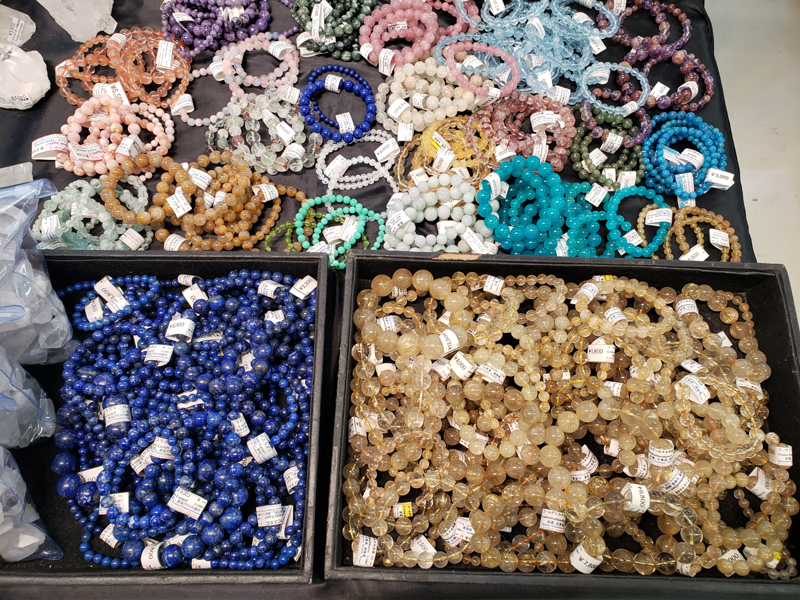
(Apatite, Lapis Lazuli, Golden Rutile Quartz, etc.)
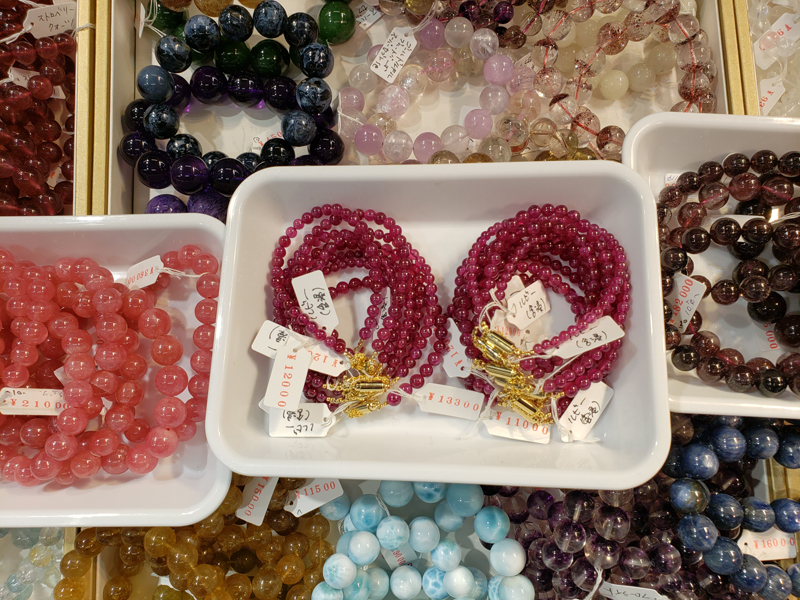
(Ruby, Incarose, Larimar, etc.)
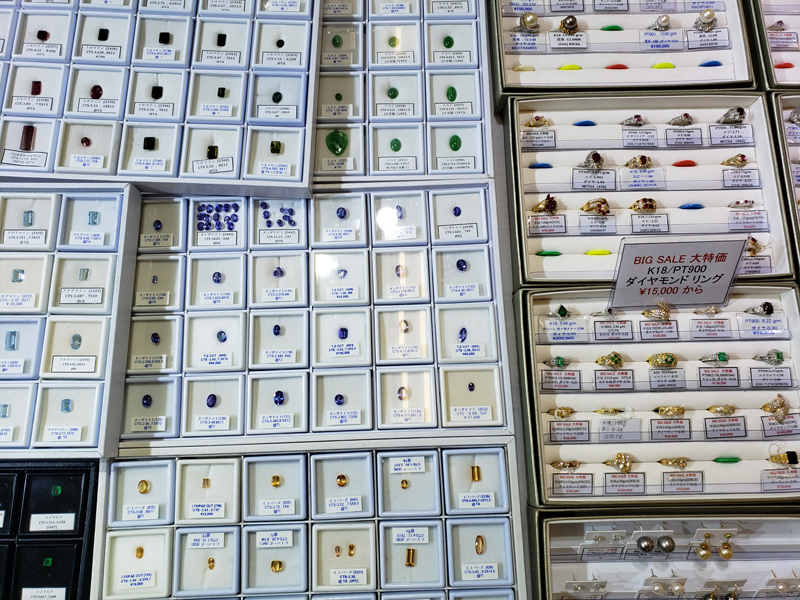
(tourmaline, aquamarine, jade, tanzanite, ruby, emerald, etc.)
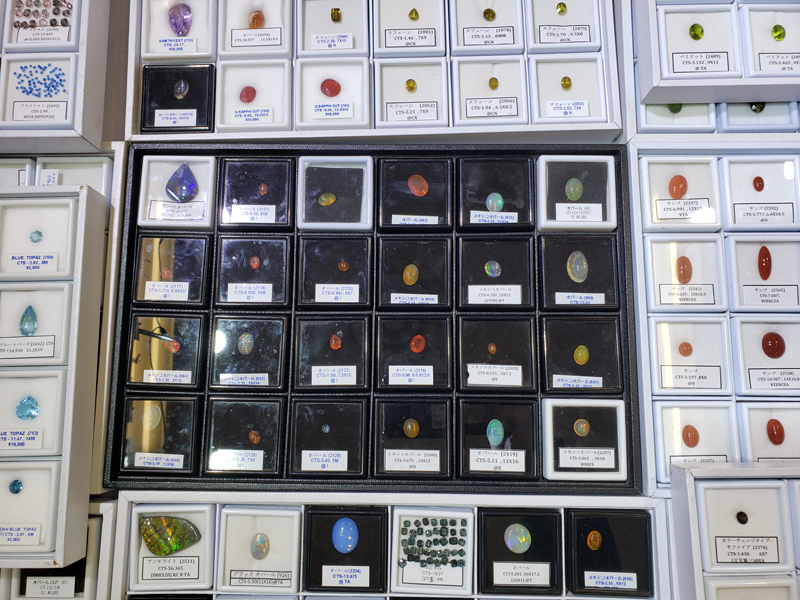
(Aweenite, Suhuen, Mexican Opal, Coral, etc.)
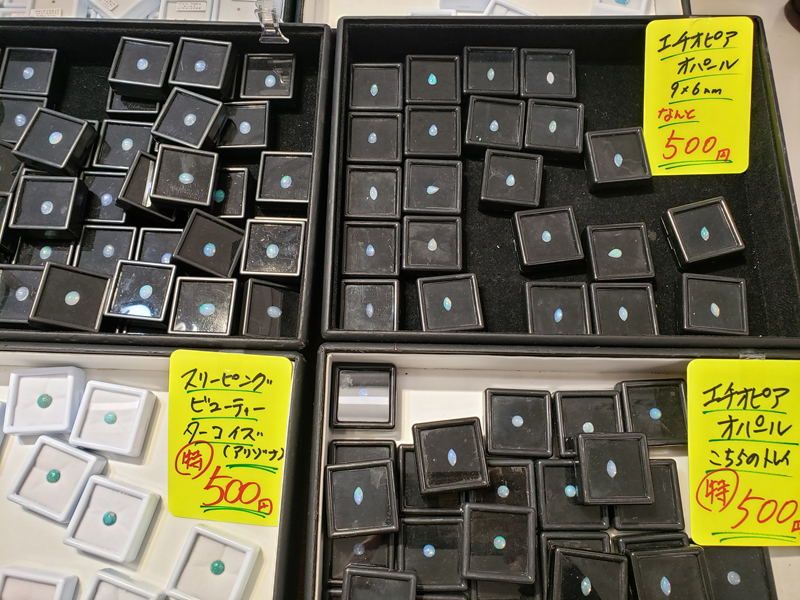
(Ethiopian Opal, Turquoise)
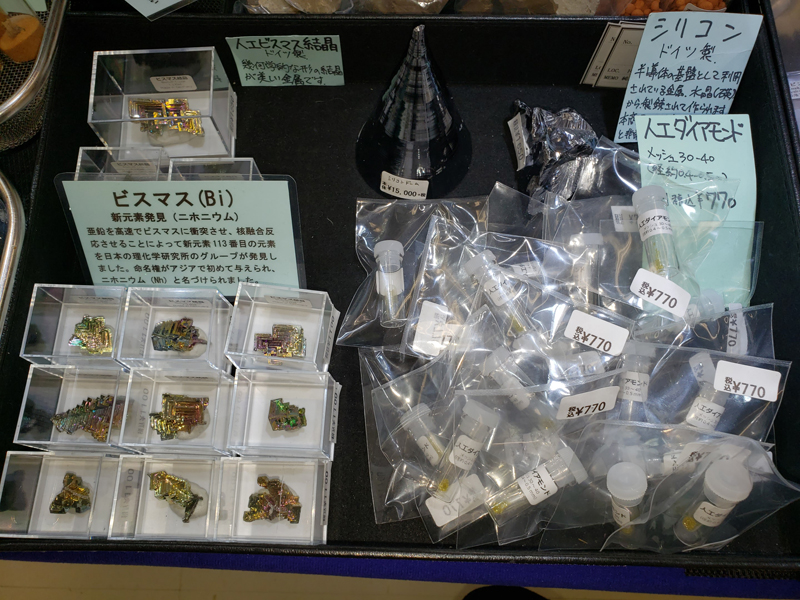
(Bismuth crystal, population diamond)
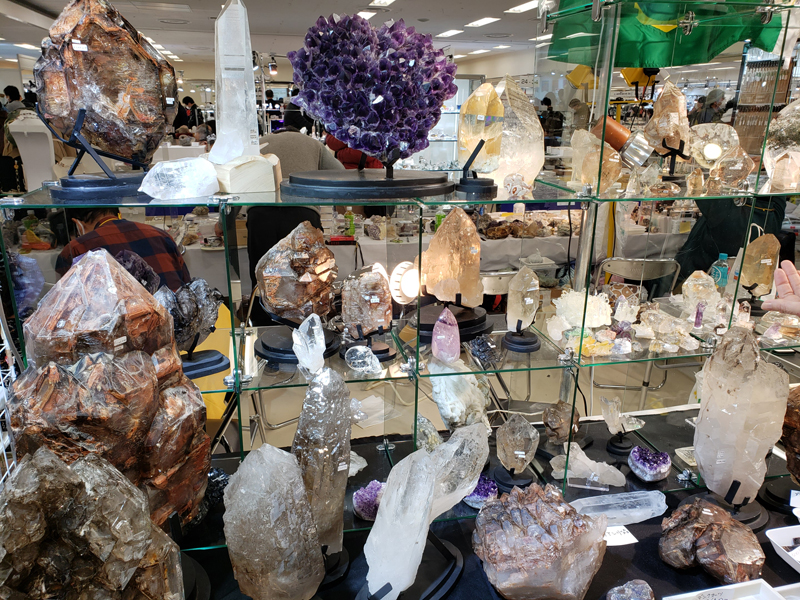
(Amethyst, Malachite, Citrine, Quartz, etc.)
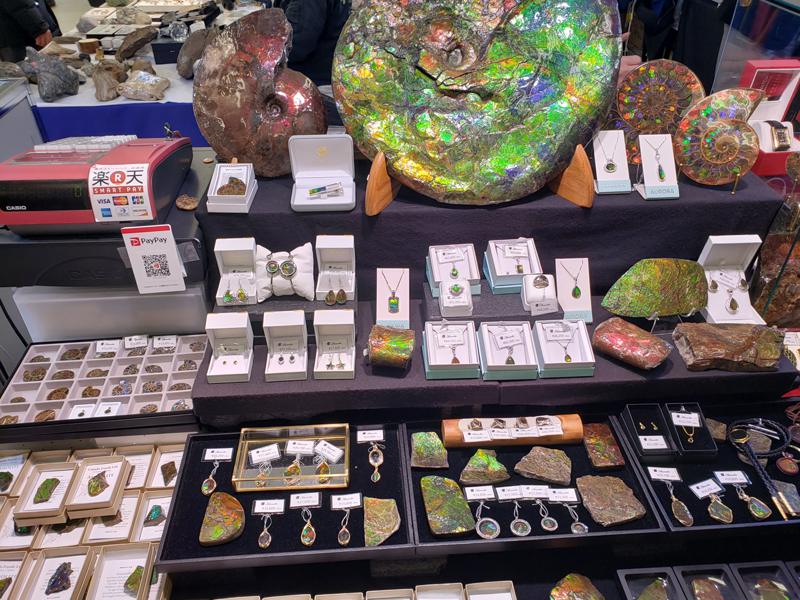
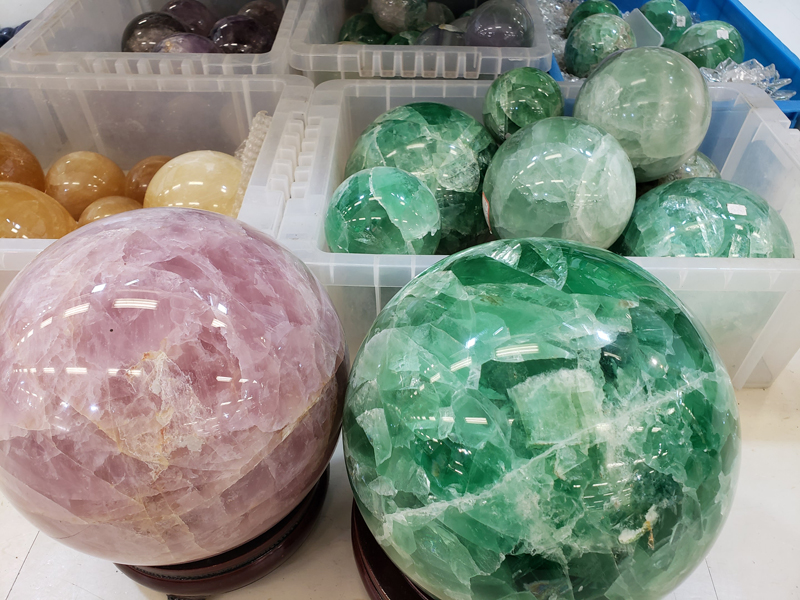
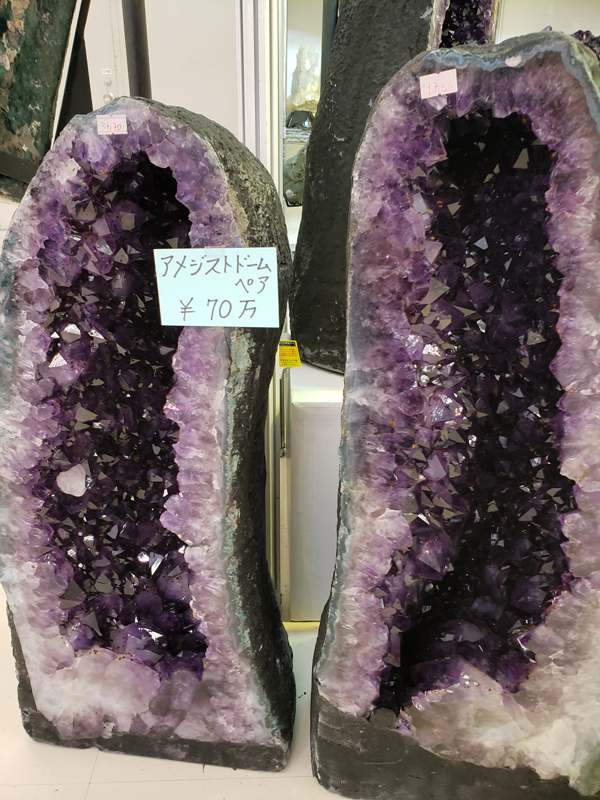
Purchased products
Upload your purchases to the gallery below. Some are for souvenirs. As the number of overseas exhibitors has decreased, it seems that there are fewer bargains overall.
Because it was only expensive, and I was not able to get a hand, I bought all the products which I could buy for less than 10,000 yen. The best bargain among them is ethiopian opal (500 yen).
Others are worth the price.
Among them, the strange species are bismuth crystals. The melting point of bismuth (element symbol: Bi) is relatively low at 271 °C, and by heating and melting the bismuth and cooling it slowly, it reacts with oxygen to create beautiful crystals.
As described in the photo, a group of Japanese RIKEN discovered the 113th element of a new element by colliding zinc with this bismuth at high speed and reacting to nuclear fusion. It was given the first naming rights in Asia and was named Nihonium (Nh).
